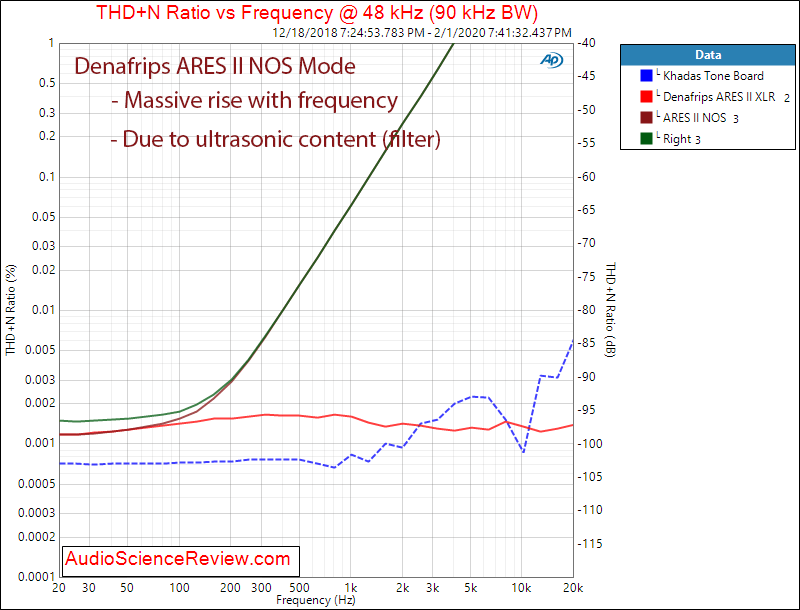sajunky
Headphoneus Supremus
It looks like Ares II do not have a proper 2nd order (at least) analog filter on the output, so NOS modes will carry a lot of ultrasonic noise. Amir in his tests didn't do proper wideband FFT plot, but he attached the following unconventional THD plot in response to the requests for testing NOS mode, it was in order to scare people.

The output filter looks very similar to the Audio GD R2R11, but here the output stage is made of non-feedback discrete amplifier. Denafrips don't give any details. If they use opamps, NOS mode will be affected negatively.
Other than that, I have no other option on R2R11 and it sounds fantastic. I tried upsampling 44.1kHz x4 in Foobar+SoX. The original 96/192kHz material sounds better, but for the upsampling I haven't made my mind yet.
Others with R1/R28 prefer 8xNOS for a modern top100 hitlist. For classic/jazz and all type of classical instruments NOS is prefered by many.

The output filter looks very similar to the Audio GD R2R11, but here the output stage is made of non-feedback discrete amplifier. Denafrips don't give any details. If they use opamps, NOS mode will be affected negatively.
Other than that, I have no other option on R2R11 and it sounds fantastic. I tried upsampling 44.1kHz x4 in Foobar+SoX. The original 96/192kHz material sounds better, but for the upsampling I haven't made my mind yet.
Others with R1/R28 prefer 8xNOS for a modern top100 hitlist. For classic/jazz and all type of classical instruments NOS is prefered by many.
Last edited:





























